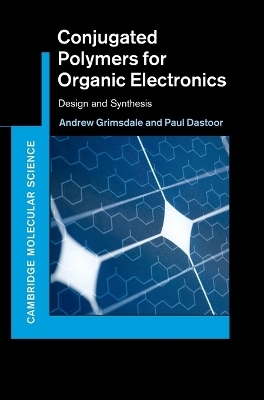
Conjugated Polymers for Organic Electronics
Cambridge University Press (Verlag)
978-1-107-00816-8 (ISBN)
Focusing on how conjugated polymers can be designed and made for use in efficient organic electronic devices, this book covers the tools for future development of more environmentally and economically friendly devices. Including examples of interdisciplinary science, it exemplifies how chemists and physicists work together to enable the design and synthesis of high-performance material in devices, allowing polymer-based electronic devices to become viable commercial products. It provides the main classes of conjugated polymers and their applications in organic electronic devices such as transistors, light-emitting diodes, and solar cells, making this a comprehensive introduction. This complete guide includes the methods for making conjugated polymers, the properties and specific structures that make them suitable for use, and how their synthesis can be optimised to improve device performance. Written by experts in the field, this is the ideal guide for researchers and practitioners across materials science, physics, chemistry, and electrical engineering.
Andrew Grimsdale, Professor at Nanyang Technological University- Singapore, has worked on synthesis of conjugated materials for organic electronic devices for over thirty years at leading institutions including Cambridge, Mainz and Melbourne. Professor Grimsdale has written the most widely cited and comprehensive reviews on luminescent polymers and is internationally recognised as a leading authority in the field. Paul Dastoor, Professor at University of Newcastle, is internationally known for his work on organic electronic devices, developing the science, engineering, and manufacturing of printed solar and biosensor technologies based on semi-conducting polymers. Professor Dastoor has a strong track record in research commercialisation and has spun out several companies, including a listing on the NASDAQ.
1. Introduction; 2. Polyacetylenes; 3. Poly(arylene vinylene)s; 4. Poly(arylene ethynylenes)s; 5. Poly(phenylene)s; 6. Polyfluorenes and related polymers; 7. Polythiophenes; 8. Other arylene based polymers; 9. Hyperbranched polymers and dendrimers; 10. Polymers with molecular-like chromophores; 11. Polymers for Phosphorescent LEDs; 12. Polymers for white-emitting PLEDs; 13. Polymers for other luminescent devices; 14. Conclusion and outlook.
| Erscheinungsdatum | 23.03.2024 |
|---|---|
| Reihe/Serie | Cambridge Molecular Science |
| Zusatzinfo | 166 Line drawings, black and white |
| Verlagsort | Cambridge |
| Sprache | englisch |
| Maße | 175 x 249 mm |
| Gewicht | 660 g |
| Themenwelt | Technik ► Maschinenbau |
| ISBN-10 | 1-107-00816-6 / 1107008166 |
| ISBN-13 | 978-1-107-00816-8 / 9781107008168 |
| Zustand | Neuware |
| Haben Sie eine Frage zum Produkt? |
aus dem Bereich


